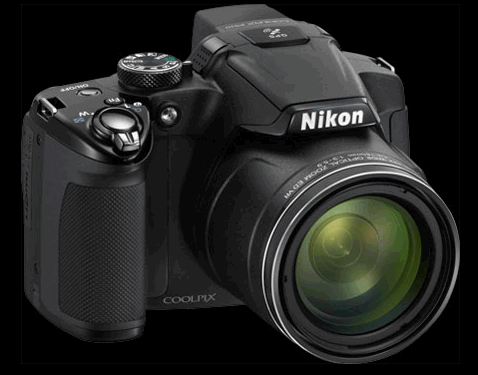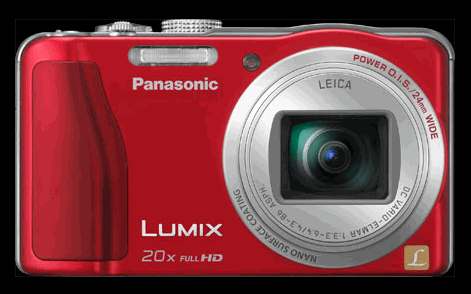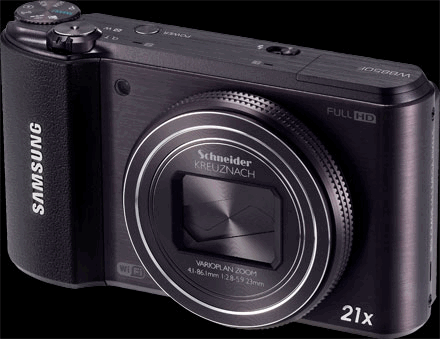Spoiler update: See the bottom of this page…
In our previous post on Compact Cameras vs Smartphones, the advantage appears to be swinging to smartphones as they slowly approach compact cameras in the quality of their camera components. But smartphones [smartphones really means “smartphones and tablets” for most of the following remarks] have 3 other key features over compact cameras:
1)Smartphones have apps, many free, that cannot only help in taking still and video images but also help process pictures/videos taken on the smartphones. Exposure corrections, cropping, adding captions, resizing , rotating are some of the the simple fixes that make the media ready to be delivered onto the web on social media sites or your/friends desktops;
2)Smartphones have the Internet connections to make image deliveries possible – so images and media get sent in a timely fashion;
3)Smartphones have 4 other winning characteristics: they are light,small, have a long battery life and have high utility in other capacities[telephoning, communication, gaming, eBooks, finding things, etc] such that they are much more likely to be “on the picture-taking scene” than your favorite camera.
So sales of point-and-shoot cameras fell by 30 per cent in value last year as people used their smartphones more often than compact cameras. Thus there are some inherent advantages to smartphones in image taking that could disrupt the compact camera market [readCisco’s Flip, Kodak’s digital cameras or newspaper like endangerment].
Finally, there is momentum, Apple, Google, and others have set an impressive pace of rapid innovation that has created momentum for their devices in the market. There is the expectation that breathtaking improvements, including for image-taking, will come to smartphones first and for the foreseeable future. And Moore’s law with its rapid technological advances would appear to be in position to support that notion for at least the next ten years.
So What Do Compact Camera Vendors Do?
Camera vendors realize what is at stake – compact cameras are on the frontlines, but higher end SLRs and video cameras are vulnerable too. But don’t be fooled. Compact cameras with their superior image sensors, lensing and camera extras still have a basic upperhand in better image quality and ability to respond better to a wider range of shooting conditions. Given the same image shooter, images or video taken with a compact camera is much more likely to look betterthan the same image taken with a smartphone. Trust me – tests with my brothers iPhone 4s found the 3compacts consistently out performing the iPhone 4s in low light, artificial light and action shooting.
But for good lighting conditions, the iPhone images looked as good as the compact cameras – and to boot they were easier to focus with tap screen operations and the screen was easier to see in bright day light than 2 of the 3 compact cameras. So what compact digital camera vendors have to do is threefold:
1)Shore up their lens and sensor advantages – so a compact camera shot become distinctly better than smartphone ones almost all of the time.
2)Copy the smartphone touch screen operations and easy delivery [for example,give a way a 1GB EY-FI card with the digital camera].
3)Invade the smartphone turf by adding WiFi, 3rd party apps and the Android OS. Add a mike and become a smart cameraphone. Nintendo and Sony have done so with games.Lo and behold the compact camera makers are releasing just such products. lets take a look at them.
Strategy 1: Shore up the Lens and Image Sensors
The new Nikon P510 CoolPix does this with a vengeance – improving the sensor, the lens, and the view screen.

The Monster Compact Camera
This Nikon camera is definitely committed to the strategy of better by lens and chip specs. They are huge. The lens is 24-1000mm 42x, the best super zooms to date are in the 21-32x range. Even with the P510’s image stabilization you will need a monopod, if not a tripod, when using the full 1000mm telephoto on this monster. But there is more – the 42x optical zoom has up to 4x digital zoom! Now digital zoom works reasonably well in the 2-4 times range but noise, image softness, and camera shake can easily creep in. But there is even more – the lens system provide for macro mode that can deliver close ups within 1cm of the lens.
Next are the sensor improvements. Now the sensor delivers 16Mpixel and is 1/2.3 in which is standard for top end compact cameras. However, because it uses a BSI [BackSide Illumination] type sensor its images are sharper and the camera works better in low light exposures. This also allows the camera to deliver 1080p video at 30fps with a stereo mike to pick up the audio recording.The view screen is 3″ 921,000 pixels TFT-LCD which tilts up and down for image composition in exceptional conditions. The screen has anti-glare coating for better daylight visibility. But there is also an electronic viewfinder with diopter adjustments.
In addition the P510 is crammed with other photographic goodies:
1)3 autofocus modes with face detection and focus tracking;
2)3 metering modes with continuous shooting at 5 fps;
3)5 flash modes including red eye adjust and long-sync;
4)12 scenic modes that adjust focus mode, metering mode, , white balance, and ev for th specific type of scene being shot;
5)GPS and geotagging;
6)self timer with two settings.
Notably missing are White Balance Bracketing, touchscreen operation, remote control, and WiFi. But also notable is the pricing – $429. This makes the P510 a possible substitute for a pricier entry level DSLR. Alternatively, consider the Nikon COOLPIX P500 12.1 CMOS Digital Camera with 36x NIKKOR Lens
Strategy 2: Copy Smartphone Touchsreen and End Delivery Features
Panasonic Lumix DMC-ZS20

An ultracompact with touchscreen, WiFi and loads of goodies
Right from the start, this Lumix ultracompact does not stint on the lens and sensor capabilities – at 20x or 24-480mm Leica lens with power image optimization and stabilization plusan extra 4x digital zoom. On the sensor side there is also 1/2.3inch HS CMOS sensor which produces 14.1MPixel still images and 1080p video images at an amazing 60fps[at reduced image size the frame rate goes up to 220fps]. Yet the camera is light and indeed compact at 7 ounces and 4 x 2 x1 inches in dimensions. This is truly a shirt pocket ultra compact.
Panasonic is not revealing what image processor they have inside probably because it is a protected trade secret. The many things the processor does are amazing:
1)delivers program, aperture, shutter priority and manual shooting modes are supported;
2)has a IA-Intelligent Auto mode where user sets image quality and resolution and then based on scene input the camera take over on exposure settings;
3)2 user customized shooting modes with ev, white balance, auto focus, flash and metering settings supplied by the user;
4)26 scene modes provide preselected settings for such shooting situations as food, cloudy landscape, night shooting, etc;
5)allows 12 effects to be applied to an image from sepia to pinch distortion;
6)provides 2 modes for HDR 3 image bracketing at different ev settings;
7)provides geotagging info from on board GPS system;
8)provides high auto ISO management;
9)manages images stabilization and 4x digital zoom ;
10)manages 7 autofocus modes;
11)provide automation for image viewing including 3D mode;
12)manages touchscreen operations including camera settings , video options, geo-mapping and touch-tap image focus .
This is an impressive amount of image processing tasks including all the picture-taking operations. Again, this creates separation from what smartphones raw can do. Sure by adding on apps at varying costs some of these features can be approximated; but the bottom line is that with quality lenses, improved sensor chips and robust image processor chips compact cameras allow photographers many more creative options and the much higher probability that there iamges will simply “look good”.
Touchscreen operations include managing all of the camera settings plus controling some actual operations. During image-taking mode the touchscreen allows focus control, post image taking preview, and application of image effects . It is not yet full screen display of apps and compl;ete operational control. But the Lumix touch screen helps to rationalize a plethora of camera settings. In effect, it bring touchscreen ease of use to an area that badly needs help. In some respects running our camera is as complicated as operating your PC or smartphone effectively.
Clearly the Lumix leads a parade of ultra-compact cameras that challenge the “portability” advanatge of smartphone cameras. By adding EY-Fi storage cards [some local camera dealers plan to do that in sales specials], Lumix become connectable to the Internet and able to provide end delivery services like smartphones. At $350 price, this is a winning combination of camera features.
Strategy 3: Invade the Smartphone Turf
Samsung WB850F

GPS, WiFi, Touchscreen equipped
Samsung is the one vendor that has the smartphone technology to steal from itself and supply its compact cameras with an advantage in the markets. And the WB850F does exactly that starting from the top. Great lens and sensor specs mean 21x zoom with Schneider lens at 23-483mm equivalent with a fast f/2.8-5.9 aperture while the sensor is BSI CMOS at 1/2.3in delivering 16MP stills and video at 1080P and 30fps These are top of the line camera core features.
The touchscreen is 3″ AMOLED which means vibrant colors and reduced glare in daylight photo taking excursions. The AMOLED screen also is handy with the GPS feature which not only does geotagging of each photo shot; but also provides maps of the current area you are in. as well basic setting and some camera operation, like tap to focus, are touchscreen oriented.
And the basic photographic features have not been scrimped on. WB850F has miniUSB and mini-HDMI jacks for data movement and connection to TV and computer screens. As well ther is a popup Flash using LED light for fill flash and low light focusing. But the big add on not seen in the other cameras is a commitment to WiFi. This means that user will not only have touch screen operations but also direct WiFi connections. users will be able to easily sign in at public and password-protected WiFi hotspots, thanks to a proprietary log-in browser. Remote viewfinder with Android phones will be supported. This is a significant remote control app. And finally for end delivery, the camera will have connection over Wifi for Facebook, YouTube, Picasa, and email.
This is the way compact cameras have to to go. Invade the smartphone turf with superior photo capabilities and hence become cameraphones – otherwise one of Apple , Google aor Microsoft will eat you alive. Only the top end SLR and ILC cameras will survive The Samsung machine does not have a public OS nor the apps creation capabilities of a smartphone or tablet. But can you imagine such capabilities hooked up to a compact. The remote image taking and image delivery opportunities are breathtaking.
Summary
Smartphones and tablets are the Swiss Army Knives of electronic gadgets. But they do not meet all cutting edge image-taking needs. By incorporating a BSI CMOS sensor and specialized camera controls in their smartphones – Apple, Nokia, Motorola , Samasung and others have taken smartphones to a new level that competes well with the best of fixed-lens compact cameras. But fixed lens is only a small part of the camera design picture. With bigger sensors, zoom lenses, image stabilization mechanisms, advanced autofocus and auto white balance controls – compact cameras have features that go well beyond smartphone capabilities. So currently for most still and video work, compact cameras should easily outperform smartphone cameras. However, now compact camera makers are offering WiFi image delivery features and touchscreen’s ease of use that has attracted users to smartphones.
The final strategy is beginning to emerge – the design of camera phones that have an OS and the ability to run 3rd party apps.The Samsung WB850F is a precursor to that transformational design while retaing remarkably adept still and video image-taking quality. Ye Editor is convinced that anorexically thin smart phone and tablet design is not necessarily a winning formula for all gadgets. But rather the winning idea is the Transfomers motif where the essentials for best operation of a device emerge in transformational fashion like the big tele-zooms emerge from the light bricks that are seen in many compact cameras today.
We see in these three compact cameras , the delivery of the Mobile Motif – light, highly portable, long battery life gadgets and cameras. Now with WiFi remote control and image delivery capabilities plus touch screens and an Android OS, compact cameras can become anything users want.
Then Nokia of all people crashes the party and announces a most innovative riff on camera design – give ’em a fixed lens f2.4 camera but with a 41MPixel sensor. Call it the Nokia 808 PureView [see here for the details]. Then use all that surplus core-chip computing power to oversample when downsizing the images to ultra-sharp 2,3,5, or 8MPixels image in size. Do the same for the video camera and churn out 1920x1080p at 30fps with video frames to die for. Charge $605 and throw in a very good GPS unit and a darn good phone. Amazing!
